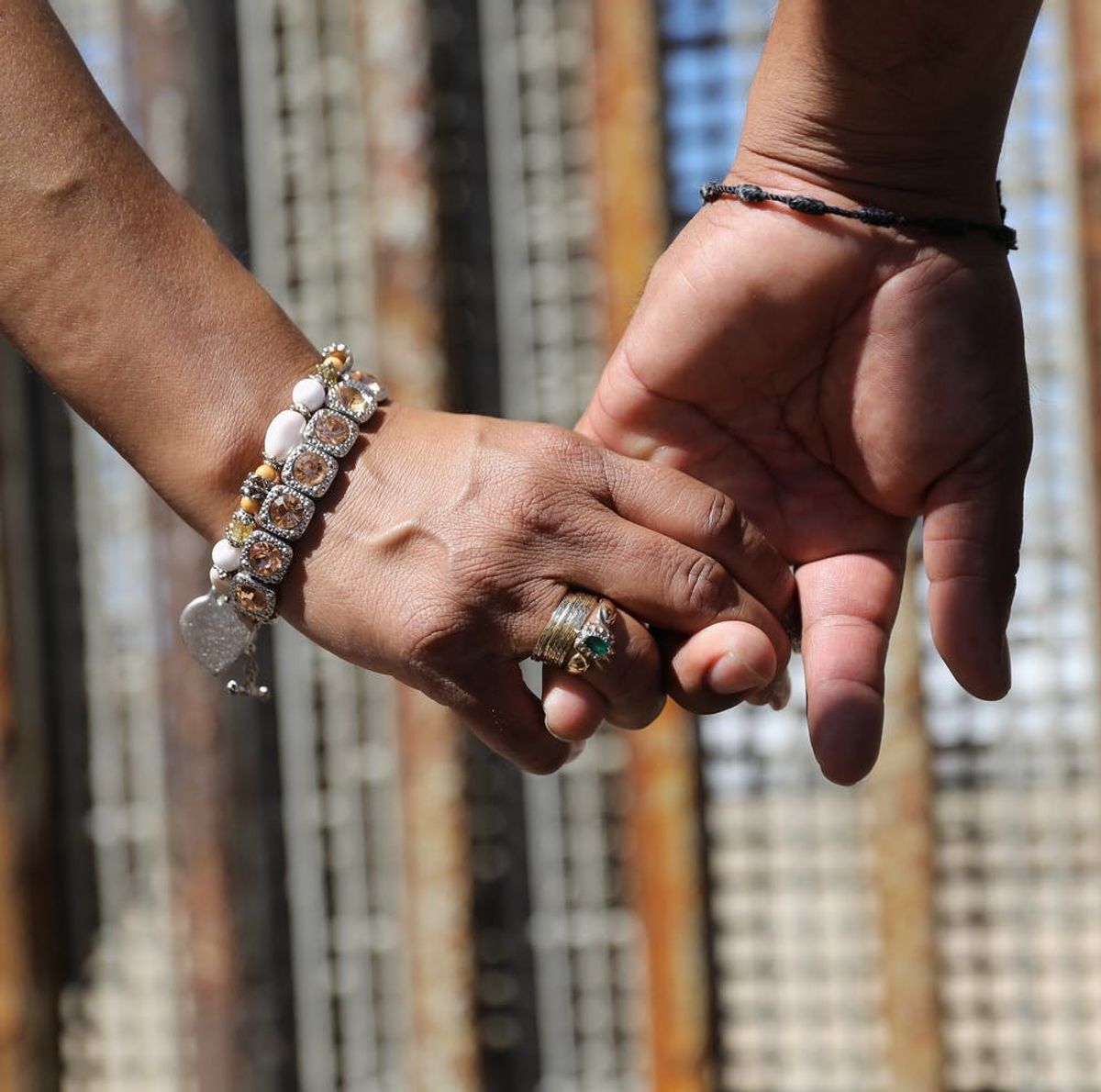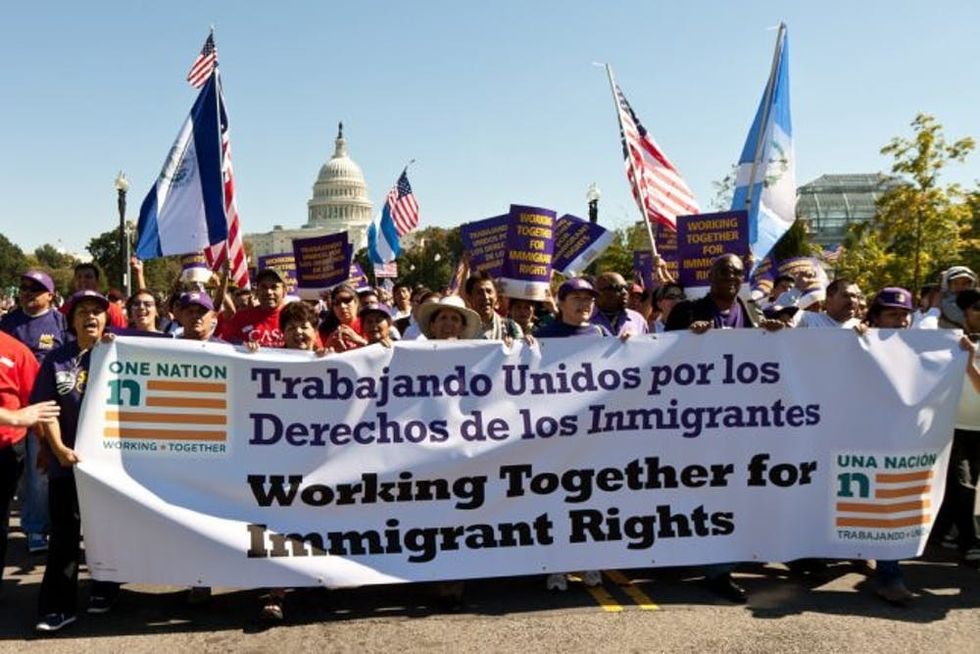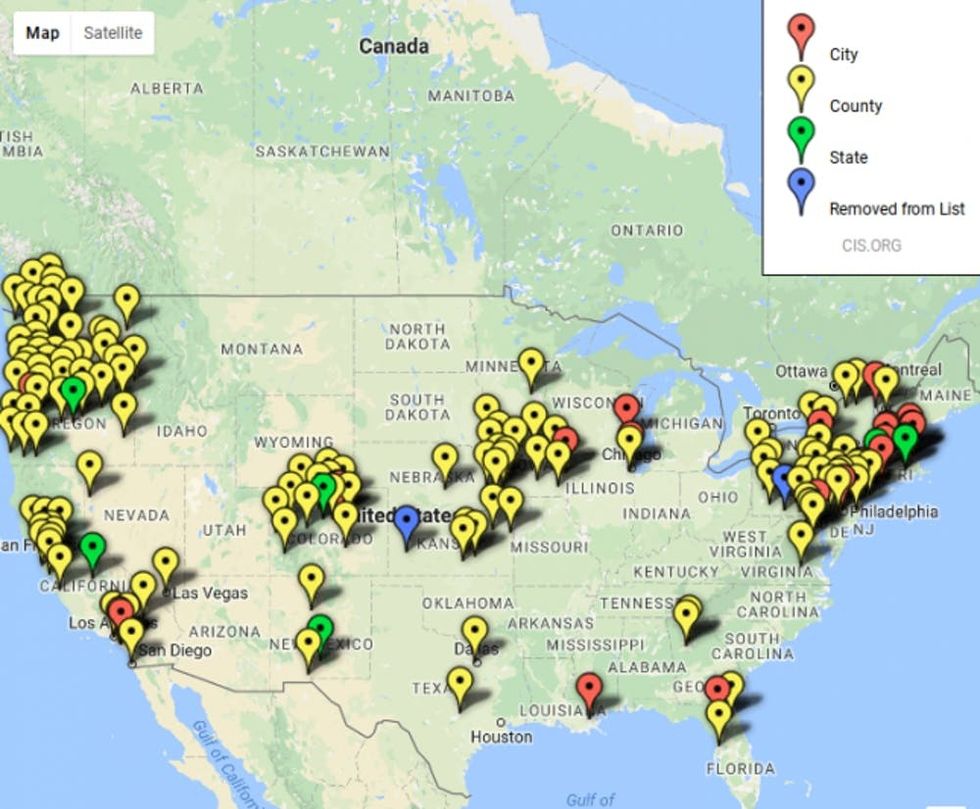Here’s what sanctuary cities do and how they work.
What Is a Sanctuary City and Why Is It Such a Hot Topic RN?


Ever since Donald Trump announced his campaign for the presidency in 2015, there has been a lot of additional talk about sanctuary cities. A sanctuary city is a city that allows undocumented citizens to live in the city to help them avoid being deported. Sanctuary cities are controversial (they are mostly supported by the left and criticized by the right), and are under direct threat from the Trump administration.
On Monday, Attorney General Jeff Sessions (perhaps one of Trump’s most controversial cabinet picks) threatened to pull federal funding from cities and states who do not comply with federal immigration laws, CNN reports. Sessions specifically made reference to federal immigration laws that require local authorities to provide the Immigration and Naturalization Service with the citizenship status of local residents upon request. As a general rule, sanctuary cities seek to protect their undocumented community members by keeping this information private from federal immigration officials.

Sanctuary cities can be found throughout the nation, including in major cities such as New York City, Chicago, and Los Angeles. But sanctuary city status hasn’t always been an effective protection against immigration raids. Last week Immigration and Customs Enforcement (ICE) released a report listing 118 jurisdictions that “do not cooperate with ICE.” More recently, CNN has reported that ICE may be specifically targeting sanctuary cities in a new series of raids.
CNN further reports that the Trump administration has been threatening, since January, to pull federal funding and grant opportunities to sanctuary cities. This has many of those cities’ mayors up in arms.
New York City mayor Bill de Blasio tweeted Monday that the city would take the Trump administration to court if it has to. “The Trump Administration is pushing an unrealistic and mean spirited executive order,” de Blasio wrote on Twitter. “If they want a fight, we’ll see them in court.”
https://twitter.com/NYCMayor/status/846506926653497345
The Los Angeles Times reports that California Senate leader Kevin de León said Monday that Sessions’ comments are “nothing short of blackmail.” De León said that the administration is relying on “alternative facts” and “Instead of making us safer, the Trump administration is spreading fear and promoting race-based scapegoating.”
Data shows “sanctuary” counties have lower crime rates than comparable nonsanctuary counties #SB54 https://t.co/rKZDsB8x8E
— Kevin de Leόn (@kdeleon) March 27, 2017
De León also tweeted Monday that “Sessions is wrong about immigrants and wrong about what makes our communities safer” and called the threat “unjustified.” Accompanying de León’s tweet was a link to a story with statistics which demonstrate lower crime statistics in sanctuary cities than cities who fully comply with federal immigration laws and do not protect undocumented citizens.
Chicago is another major sanctuary city that has spoken out against the new administration’s aggressive crackdown on undocumented immigrants and sanctuary cities previously.
Whether you're from Poland or Pakistan, India or Ireland, Israel, Mexico or Moldova, you are welcome in Chicago https://t.co/lDuCLgfrP3
— ChicagosMayor (@ChicagosMayor) January 25, 2017
In January Chicago’s mayor Rahm Emanuel made a statement that all immigrants continue to be welcome in Chicago, despite threats from the Trump administration.
As de León tweeted Monday, statistics shows that sanctuary cities see less crime than other cities — according to a January report from American Progress, there are an average of 35.5 fewer crimes per 10,000 people in sanctuary cities. Not only are crime rates lower on average, but sanctuary cities have a poverty rate that is 2.3 percent lower than other cities, and have an unemployment rate 1.1 percent lower.
These statistics correct Trump’s assertion that sanctuary cities “breed crime.” In a February 5 interview with Bill O’Reilly, Trump stated, “I’m very much opposed to sanctuary cities. They breed crime. There’s a lot of problems.” As de León alluded to, it’s an “alternative fact,” which is to say it’s not true, that sanctuary cities breed crime.
Trump has also harped on the myth that undocumented immigrants are a detriment to the US economy for well over a year. In November of 2015, Trump claimed in an interview with CNN’s Erin Burnett that only 10 percent of undocumented immigrants pay taxes. This is also not true. The Congressional Budget Office reported in 2007 that between 50 and 75 percent of undocumented people living in the US pay income taxes each year. More recently, a 2016 analysis from the Institute on Taxation and Economic Policy found that undocumented immigrants pay $12 billion in taxes each year.
Sanctuary cities are painted as controversial, but these cities prevent undocumented immigrants from being deported (which often means separating families), and data shows that sanctuary cities have fewer problems with crime and poverty on average than non-sanctuary cities. Trump’s “race-based scapegoating,” as de León called it, simply doesn’t stand up to the facts about sanctuary cities.
What do you think about sanctuary cities? Let us know on Twitter @BritandCo.
(Photos via ep_jhu/Flickr + Center for Immigration Studies, John Moore/Getty)



















































































































